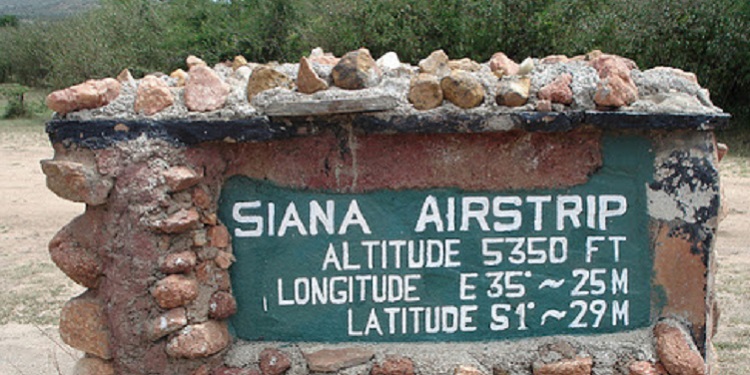When planning a visit to Masai Mara, understanding the seasonal variations and wildlife patterns is essential for maximizing your safari experience.
What is Best Time to Visit Masai Mara
The best time to visit the Masai Mara National Reserve is during the dry season, from July to October. This period coincides with the Great Migration, where over 1.5 million wildebeest, zebras, and other herbivores traverse the Mara River, creating one of nature’s most spectacular events.
The dry weather results in thinner vegetation, making it easier to spot wildlife congregating around waterholes and rivers. Additionally, the clear skies and warm temperatures ranging from 24°C to 28°C (75°F to 82°F) enhance the overall safari experience. Although this is the peak tourist season with higher prices and crowded spots, the unparalleled wildlife viewing opportunities make it the most rewarding time to visit
Here’s a detailed month-by-month guide to help you decide the best time for your adventure:
January – February
Weather: Hot and dry with temperatures around 28°C (82°F) during the day and 14°C (57°F) at night. Highlights: This period is known as the ‘Lion season’ due to the abundance of wildlife, especially big cats, as water sources become scarce and animals gather around waterholes. Birdwatching is also excellent during these months as migratory birds are present.
March – May
Weather: This is the ‘long rains’ season, with heavy rainfall peaking in April. Temperatures range from 26°C (79°F) to 14°C (57°F). Highlights: The landscape is lush and green, making it a beautiful time for photography. It’s a great period for spotting newborn animals and predator-prey interactions. However, roads can become muddy and difficult to navigate, and some lodges may offer lower rates due to fewer tourists.
June – October
Weather: This is the dry season, with pleasant temperatures around 25°C (77°F) to 13°C (55°F) and clear skies. Highlights: The Great Migration peaks during this period, particularly from July to September, when over 1.5 million wildebeest, zebras, and other herbivores cross the Mara River. This is the best time for wildlife viewing, but it’s also the busiest and most expensive season. Early booking is essential.
November – December
Weather: The ‘short rains’ begin, with occasional showers mostly in the afternoons. Temperatures rise slightly, ranging from 27°C (81°F) to 14°C (57°F). Highlights: The scenery becomes lush and green again, and birdlife is vibrant. Wildlife viewing remains good, and the park is less crowded. December is particularly beautiful with lush vegetation and opportunities to see newborn animals.
Summary
- Best for the Great Migration: July to October
- Best for Birdwatching: November to February
- Best for Fewer Crowds and Lower Prices: March to May
- Best Overall Wildlife Viewing: June to October
Each season offers unique experiences, so the best time to visit Masai Mara largely depends on your preferences and what you wish to see.
Common FAQs on the Best Time to Visit Masai Mara
1. Is it worth visiting Masai Mara outside the Great Migration period?
Yes, visiting Masai Mara outside the Great Migration (November to June) can still offer exceptional wildlife viewing. During the wet season, the landscape is lush and green, which is perfect for photography and birdwatching. You can also witness newborn animals and predator-prey interactions in a less crowded environment.
2. How does the weather affect safari activities in Masai Mara?
The weather greatly influences safari activities. During the dry season (June to October), wildlife is easier to spot as animals gather around water sources, and the vegetation is thinner. In the wet season (March to May, November), while the rains can make some roads challenging to navigate, the scenery is more vibrant, and the parks are less crowded, offering a more intimate safari experience.
3. Are there any specific months to avoid visiting Masai Mara?
March and April are typically the months to avoid due to the heavy rains, which can make roads difficult to traverse and some safari activities challenging. However, if you don’t mind the rain, these months offer lush landscapes and fewer tourists.
4. What should I pack for a safari in Masai Mara?
Regardless of the season, pack layers of clothing as temperatures can vary widely. Bring lightweight, breathable clothing for the day and warmer attire for early morning and evening game drives. Don’t forget essentials like a hat, sunscreen, insect repellent, binoculars, and a good camera with a zoom lens.
5. How far in advance should I book my trip to Masai Mara?
For trips during the Great Migration (July to October), it is advisable to book at least six months to a year in advance due to high demand. For other times of the year, booking a few months in advance is usually sufficient, though early booking can still ensure the best rates and accommodations.
6. What are the accommodation options in Masai Mara during different seasons?
During the dry season, accommodations can be more expensive and harder to book due to high demand. The wet season sees reduced rates and fewer tourists, making it easier to find good deals on lodges and camps. Luxury lodges, tented camps, and budget options are available year-round.
7. What wildlife can I expect to see during the wet season?
During the wet season (November to May), you can expect to see a variety of resident wildlife, including elephants, lions, cheetahs, leopards, and buffalo. The lush vegetation and presence of migratory birds make this period ideal for birdwatching. The wet season is also a great time to see newborn animals and predator-prey interactions as the landscape is teeming with life.
8. Are there any specific events or festivals in Masai Mara to consider when planning a visit?
While Masai Mara itself does not host specific events or festivals, planning your visit around local Maasai cultural events can enrich your experience. The Maasai people celebrate various traditional ceremonies throughout the year, which can offer a unique cultural insight alongside your wildlife safari.
9. How does the presence of mosquitoes and the risk of malaria vary throughout the year?
Mosquitoes are more prevalent during the wet season (March to May and November), increasing the risk of malaria. It is advisable to take antimalarial medication and use insect repellent, especially during these months. The dry season (June to October) has fewer mosquitoes, reducing the risk of malaria, but precautions are still recommended.
10. What is the visibility like for photography in different seasons?
The dry season offers excellent visibility for photography, with clear skies and minimal dust. Wildlife is easier to spot and photograph around waterholes. During the wet season, the lush green landscapes provide stunning backdrops for photos, and the presence of migratory birds adds to the photographic opportunities. However, occasional rain showers can affect visibility and accessibility.
11. Can I experience the Great Migration without the crowds?
To experience the Great Migration with fewer crowds, consider visiting in late June or early October. These months are at the beginning and end of the peak migration period, respectively, and may offer a less congested experience. Staying in private conservancies adjacent to the Masai Mara National Reserve can also provide a more exclusive viewing experience with fewer vehicles.
12. What are the pros and cons of visiting during the shoulder seasons?
Visiting during the shoulder seasons (June and October) can offer a balance between weather, wildlife viewing, and crowd levels. These months mark the transitions between the wet and dry seasons, providing good opportunities for wildlife viewing with relatively fewer tourists compared to peak months. However, the weather can be unpredictable, with occasional showers in June and increasing temperatures in October.
13. How do the temperatures vary between daytime and nighttime throughout the year?
Daytime temperatures in Masai Mara generally range from 24°C to 28°C (75°F to 82°F) depending on the season. Nighttime temperatures can drop significantly, particularly in the dry season (June to October), often reaching lows of 12°C to 14°C (54°F to 57°F). It’s important to pack layers to stay comfortable during early morning and evening game drives when it can be quite chilly.
14. What are the advantages of staying in private conservancies around Masai Mara?
Staying in private conservancies offers several benefits, including fewer crowds, exclusive game viewing experiences, and the opportunity to participate in activities not allowed in the national reserve, such as night drives and walking safaris. These conservancies often have luxurious accommodations and more personalized services, enhancing the overall safari experience.
15. How does the Great Migration timing affect accommodation availability?
Accommodation during the Great Migration (July to October) can be scarce due to high demand. It is advisable to book lodges and camps well in advance, preferably six months to a year ahead of your planned visit. This ensures you secure the best locations and rates, especially if you wish to stay near prime viewing areas like the Mara River.
16. Are there any health considerations to keep in mind when visiting Masai Mara?
Visitors to Masai Mara should take malaria prophylaxis, especially during the wet season when mosquitoes are more prevalent. Vaccinations for yellow fever, typhoid, and hepatitis A and B are recommended. It’s also important to carry a basic first-aid kit and stay hydrated, as safari activities can be physically demanding.
17. What impact do the rains have on road conditions and accessibility in Masai Mara?
During the long rains (March to May) and short rains (November), some roads in Masai Mara can become muddy and challenging to navigate. This can affect accessibility to certain areas and may lead to delays in safari activities. However, many lodges and tour operators are well-prepared for these conditions and can provide suitable vehicles and alternative routes to ensure continued wildlife viewing.
18. What special preparations should be made for photography in Masai Mara?
For photography, bring a camera with a good zoom lens to capture distant wildlife. A bean bag or tripod can help stabilize your shots. Extra batteries and memory cards are essential as charging facilities may be limited in remote lodges. Consider protective gear for your equipment to safeguard against dust during the dry season and moisture during the wet season.
19. Is it possible to combine a visit to Masai Mara with other Kenyan attractions?
Yes, many travelers combine their Masai Mara safari with visits to other Kenyan attractions such as Amboseli National Park, Lake Nakuru, and the coastal region of Mombasa. This can provide a diverse experience of Kenya’s wildlife, landscapes, and cultural heritage. Tour operators often offer multi-park packages that include transportation and accommodation.
20. What are some unique activities to do in Masai Mara aside from game drives?
Aside from traditional game drives, visitors can enjoy hot air balloon safaris, which offer a unique perspective of the landscape and wildlife. Walking safaris, night drives, and cultural visits to Maasai villages provide additional insights into the local ecology and culture. These activities are often available in private conservancies around the reserve.
21. How can I best plan my budget for a trip to Masai Mara?
Planning a budget for Masai Mara involves accounting for several factors: accommodation, park fees, safari tours, and travel costs. During the peak season (July to October), prices are higher due to increased demand. Consider traveling in the shoulder seasons (June, November) for lower prices. Lodging in private conservancies can be more expensive but

